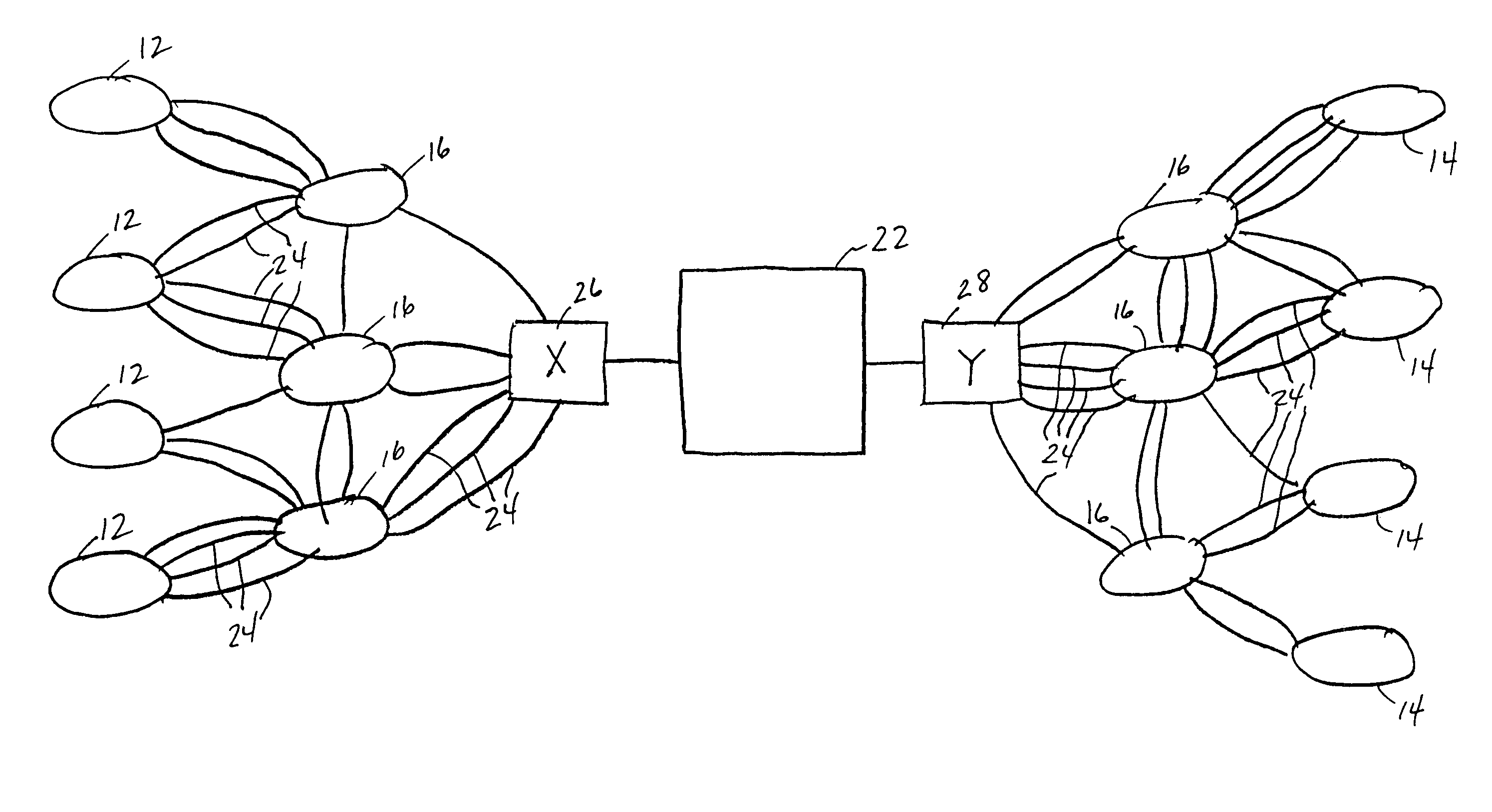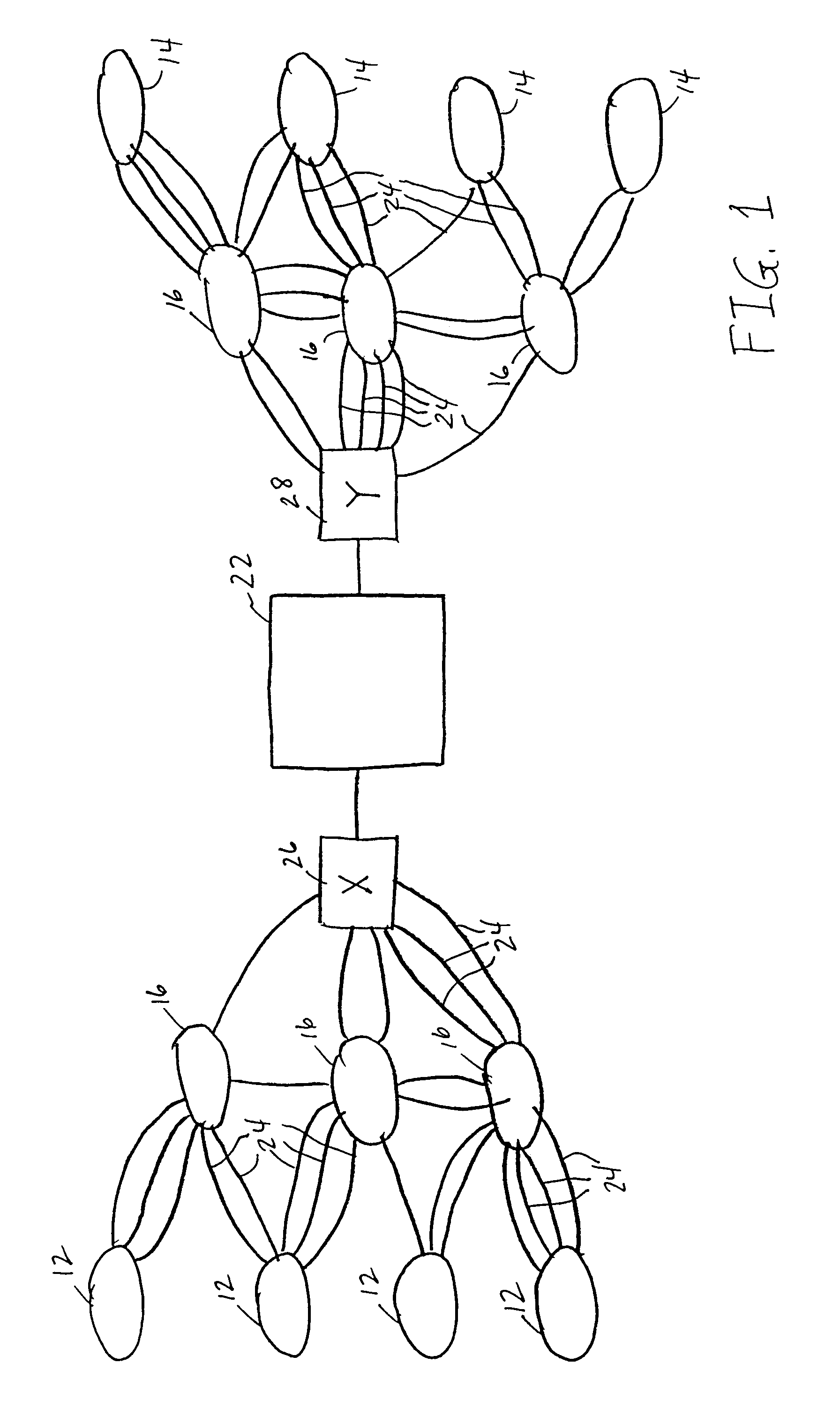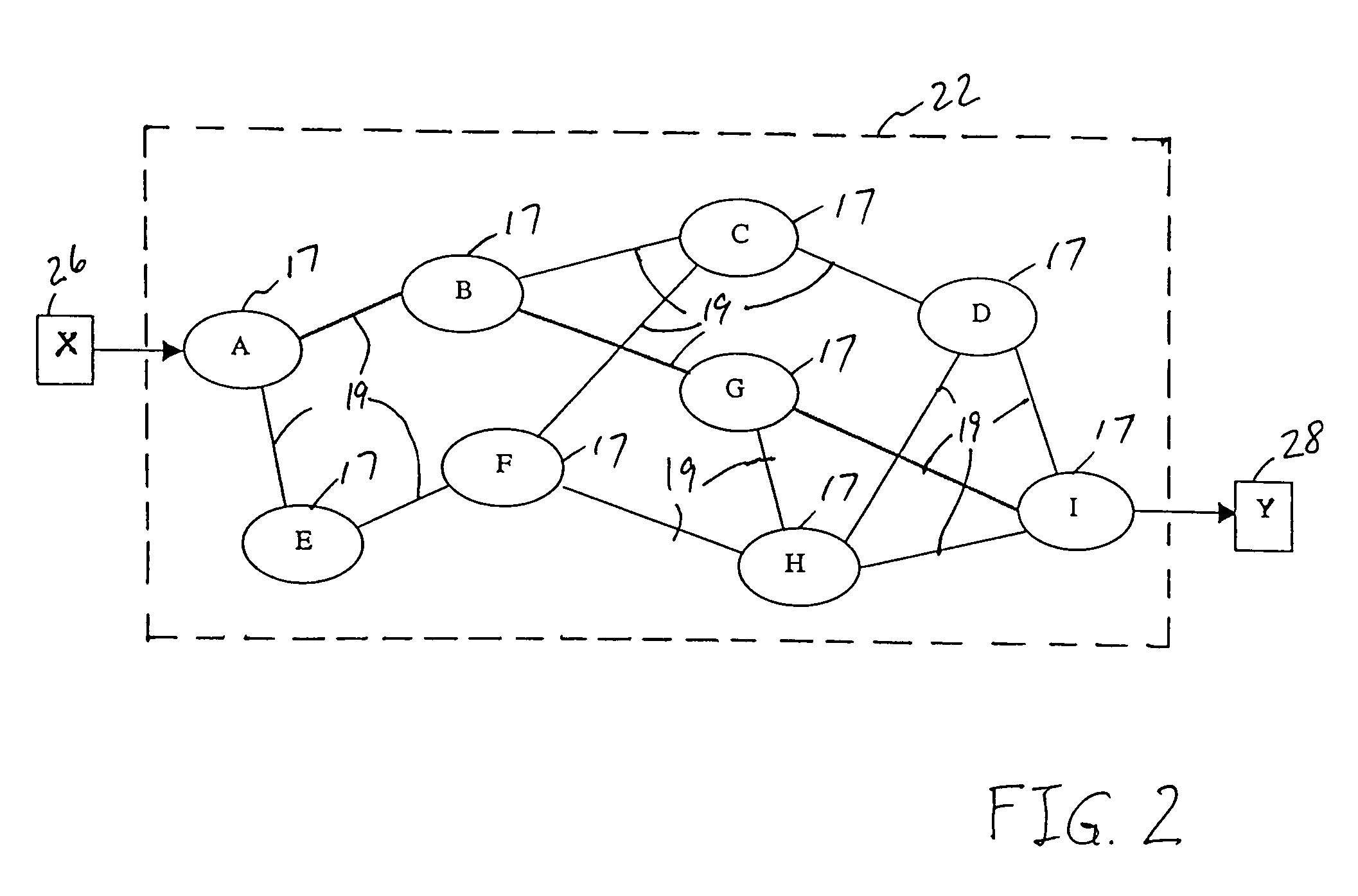Apparatus and method for forwarding data on multiple label-switched data paths
a technology of data path and data forwarding, applied in the direction of electrical apparatus, data switching network, digital transmission, etc., can solve the problems of difficult to compute the hash of ip address at each node, difficult to distinguish multiple physical parallel links within the route or path, etc., to save considerable processing time, fast and more efficient, and efficient use
- Summary
- Abstract
- Description
- Claims
- Application Information
AI Technical Summary
Benefits of technology
Problems solved by technology
Method used
Image
Examples
Embodiment Construction
[0020]FIG. 1 is a schematic block diagram of a network 10 which can implement a packet forwarding technique in accordance with one embodiment of the invention. Referring to FIG. 1, the network 10 can include multiple nodes 16 connected by links 24 which carry data packets from node to node on the network 10. As shown, the network includes multiple source nodes 12 and destination nodes 14 connected to the network nodes 16. A source node 12 can forward data packets over the network 10 to a destination node 14. It will be understood that the source and destination nomenclature is used as a convention to describe the direction of data flow. In conventional networks, all nodes can typically serve as a source node or a destination node, depending upon whether it is sending or receiving data.
[0021]In accordance with the invention, the network 10 includes a subnetwork 22 over which packets can be transferred en route from a source node 12 to a destination node 14. Packets enter the subnetwo...
PUM
 Login to View More
Login to View More Abstract
Description
Claims
Application Information
 Login to View More
Login to View More - R&D
- Intellectual Property
- Life Sciences
- Materials
- Tech Scout
- Unparalleled Data Quality
- Higher Quality Content
- 60% Fewer Hallucinations
Browse by: Latest US Patents, China's latest patents, Technical Efficacy Thesaurus, Application Domain, Technology Topic, Popular Technical Reports.
© 2025 PatSnap. All rights reserved.Legal|Privacy policy|Modern Slavery Act Transparency Statement|Sitemap|About US| Contact US: help@patsnap.com



